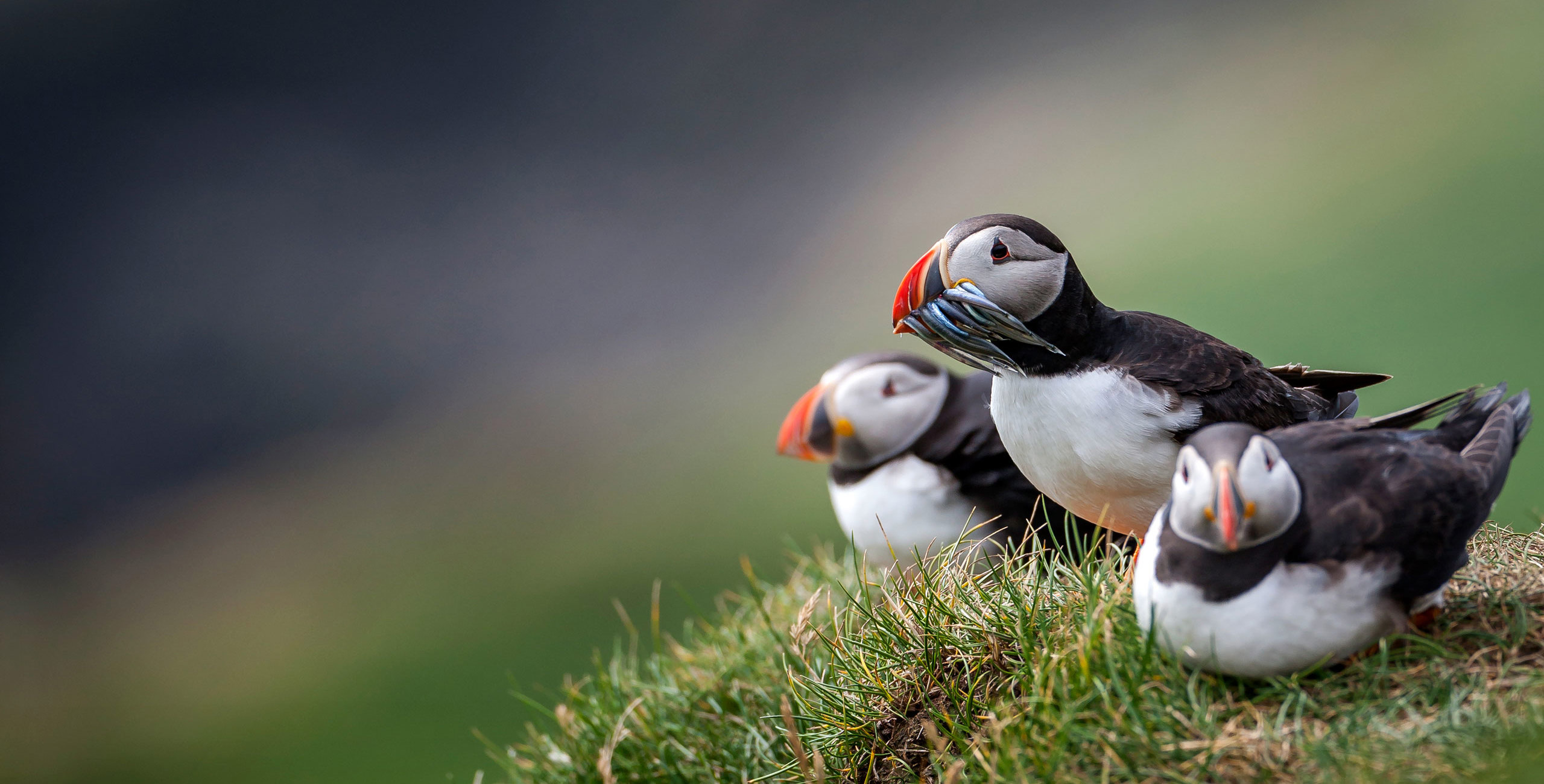
These stocky black and white little birds with the colourful beaks are very dear to the Faroese people and there are about 500.000 pairs of Puffins breeding in the Faroe Islands. Due to its large red, yellow and black beak the puffin is often called the Parrot of the Sea.
Puffins both live on the sea and create colonies on the tops of cliffs, making burrows amongst the large rocks or in the ground. They are about 26 – 29 cm tall, weigh around 400 grams and can become very old. Puffins flap their short wings rapidly while in the air and swim well under water. Puffins eat both fish and zooplankton, and have the ability to carry a large amount of fish in their uniquely shaped beaks.
Breeding Season
The Puffins mate for life and are very loyal to their burrows. Young Puffins will choose their mates out at sea, and then find each other in the colony during breeding season. The female Puffin will lay a single egg and the parents will take turns keeping the egg warm and safe, and to feed the chick, or puffling, once it has hatched. Once the breeding season is over, the colourful beaks will become smaller and duller.
Conservation Issues
The Faroe Islands are very dedicated to the preservation of birds and Puffins are no exception. Puffin colonies have started to diminish in recent years, and regulations where implemented in order to maintain the population. A restricted hunting season was also implemented, but results where limited. Studies show, that due to reduced fish stocks close to the shore, the adult birds have to fly farther and farther away from the nest in order to find food, leaving the pufflings hungry and defenceless. Puffins holding large amounts of fish in their mouths are now left alone, as they are carrying this food to their puffling. The bird population is slowly beginning to recover, yet Puffins are still considered a vulnerable species and experts continue to work, together with the authorities, towards the preservation of the species and their habitats.
The Visit Faroe Islands website has more information and a booklet on birdlife and bird watching in the Faroe Islands.